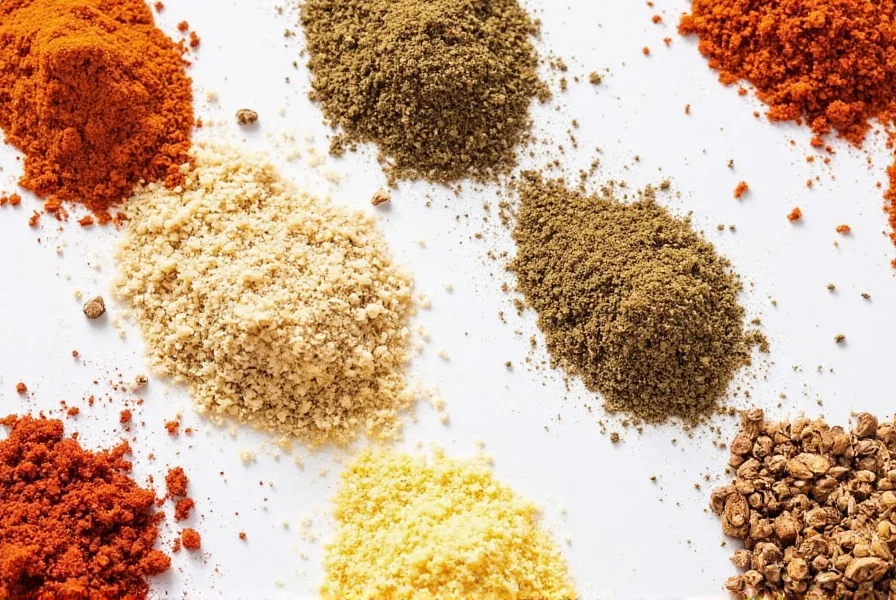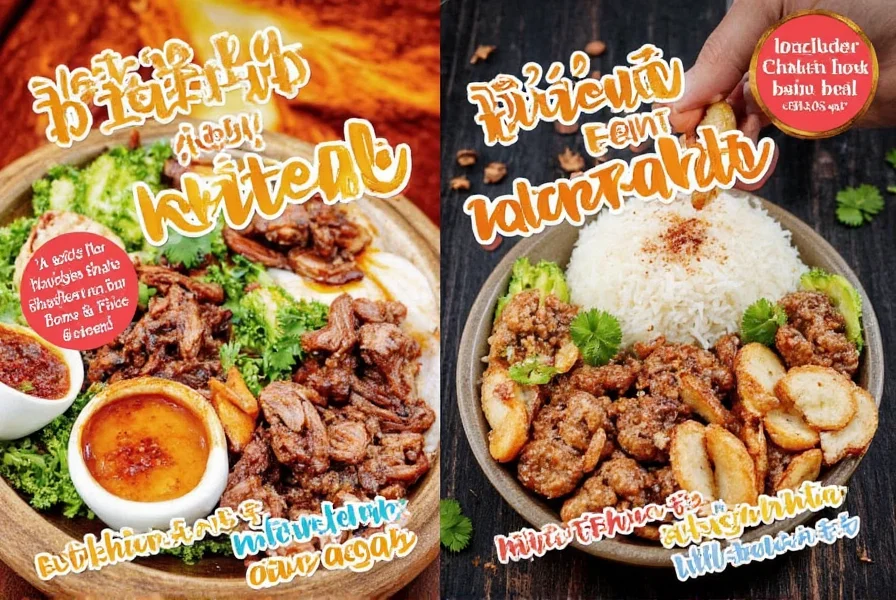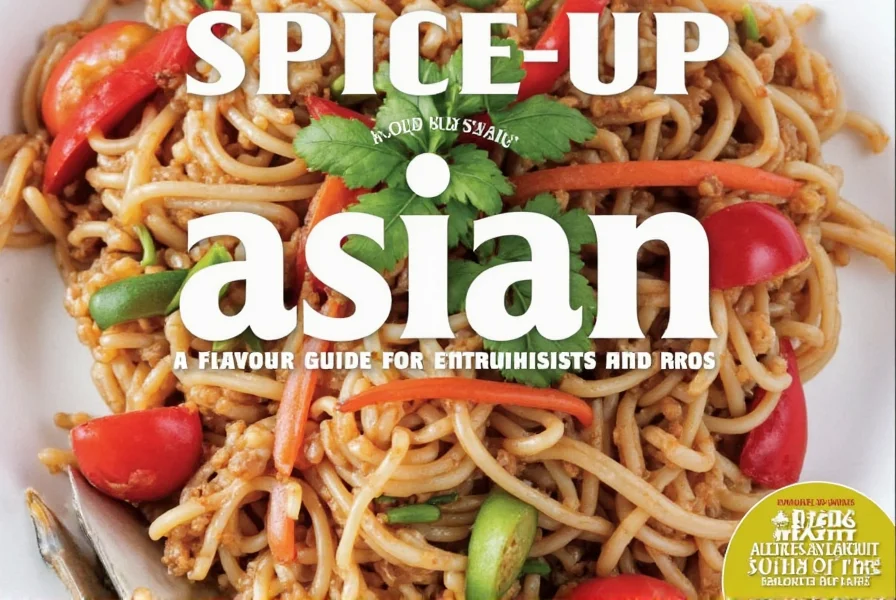Table of Contents
Introduction
Looking to cook delicious Asian meals at home? Whether you're a beginner or a seasoned cook, these 10 easy recipes will help you create authentic dishes with minimal effort. From pad thai to sushi rolls, each recipe includes step-by-step instructions, ingredient lists, and spice tips to ensure success. Discover how to balance flavors, select quality ingredients, and master fundamental techniques for restaurant-quality results in your own kitchen.

Easy Pad Thai Recipe
Pad Thai is Thailand's iconic street food, featuring stir-fried rice noodles with eggs, tofu, and a tangy-sweet sauce. This beginner-friendly version takes just 20 minutes to prepare.
Ingredients
- 200g rice noodles
- 2 tbsp tamarind paste (key souring agent)
- 2 tbsp fish sauce (salty/umami base)
- 1 tbsp palm sugar (or brown sugar)
- 2 eggs, beaten
- 100g firm tofu, cubed
- 1 cup bean sprouts
- 2 green onions, sliced
- 1 tbsp chili flakes (adjust to taste)
- 1 tbsp crushed peanuts
- Lime wedges for garnish
Instructions
- Soak rice noodles in warm water for 15 minutes until pliable
- Heat 1 tbsp oil in wok over high heat. Add tofu and stir-fry until golden
- Push tofu to side, add eggs and scramble until cooked
- Add noodles, tamarind paste, fish sauce, and sugar. Toss for 2 minutes
- Stir in bean sprouts and green onions. Cook 1 more minute
- Top with chili flakes, peanuts, and lime wedges
Spice Tip: For authentic flavor, use tamarind paste instead of vinegar. If unavailable, substitute with 1 tbsp rice vinegar + 1 tsp brown sugar.
Quick Vegetable Stir-Fry
This 15-minute stir-fry is perfect for weeknights. Customize with your favorite vegetables and protein.
Ingredients
- 2 cups broccoli florets
- 1 bell pepper, sliced
- 1 carrot, julienned
- 2 garlic cloves, minced
- 1 tbsp ginger, grated
- 3 tbsp soy sauce
- 1 tbsp oyster sauce
- 1 tsp sesame oil
- 1 tbsp rice vinegar
- 1 tbsp sesame seeds
Instructions
- Heat 1 tbsp oil in wok over high heat
- Add garlic and ginger, stir 30 seconds until fragrant
- Add broccoli and carrots, stir-fry 3 minutes
- Include bell pepper, cook 2 more minutes
- Combine soy sauce, oyster sauce, and rice vinegar. Pour over vegetables
- Finish with sesame oil and sesame seeds
Spice Tip: For extra heat, add 1 tsp chili garlic sauce. For umami depth, include 1 tsp mushroom powder.
Homemade Sushi Rolls
Create restaurant-quality sushi at home with this simple guide. Perfect for beginners!
Ingredients
- 2 cups sushi rice
- 2 tbsp rice vinegar
- 1 tbsp sugar
- 1 tsp salt
- 4 sheets nori
- 1 avocado, sliced
- 1 cucumber, julienned
- 100g smoked salmon or tofu
- Wasabi and soy sauce for serving
Instructions
- Cook rice and mix with vinegar, sugar, and salt
- Place nori on bamboo mat. Spread rice evenly
- Arrange fillings horizontally across center
- Roll tightly using bamboo mat, sealing edge with water
- Slice with sharp knife, wipe blade between cuts
Spice Tip: For authentic flavor, use Japanese rice vinegar. Add wasabi directly to fillings for heat control.
Simple Miso Soup
This comforting Japanese soup takes just 10 minutes to prepare. Perfect as a starter or light meal.
Ingredients
- 4 cups dashi broth (or vegetable stock)
- 3 tbsp white miso paste
- 100g firm tofu, cubed
- 2 green onions, sliced
- 1 sheet nori, torn
- 1 tbsp dried wakame seaweed
Instructions
- Heat dashi broth until simmering (do not boil)
- Remove from heat. Dissolve miso paste in small bowl with broth
- Return to pot, add tofu, wakame, and green onions
- Serve immediately with nori on top
Spice Tip: For depth, add 1 tsp sake or mirin. Avoid boiling miso to preserve probiotics.
Korean Bibimbap
This colorful rice bowl combines sautéed vegetables, protein, and gochujang for authentic Korean flavors.
Ingredients
- 2 cups cooked rice
- 1 cup spinach, blanched
- 1 carrot, julienned and sautéed
- 1 cup bean sprouts, blanched
- 100g beef or tofu, seasoned with soy sauce
- 2 tbsp gochujang (Korean chili paste)
- 1 egg, fried
- 1 tbsp sesame oil
Instructions
- Arrange all vegetables and protein on rice
- Top with fried egg
- Mix gochujang with 1 tsp water for dipping sauce
- Drizzle sesame oil over entire bowl
- Stir thoroughly before eating
Spice Tip: For authentic heat, use Korean gochujang. Substitute with 1 tbsp sriracha + 1 tsp brown sugar if unavailable.
Conclusion
Mastering these 5 essential Asian dishes unlocks a world of flavors in your kitchen. Each recipe balances the five key elements of Asian cuisine: sweet, sour, salty, bitter, and umami. Remember to start with quality ingredients, toast whole spices when needed, and adjust heat levels to your preference. With practice, you'll confidently create restaurant-quality meals that celebrate cultural traditions while fitting your lifestyle.

Frequently Asked Questions
What are the easiest Asian meals for beginners to cook?
Miso soup and vegetable stir-fry are perfect starters. Miso soup requires just 4 ingredients and takes 10 minutes, while stir-fry uses simple techniques with minimal prep. Both teach fundamental skills like balancing flavors and high-heat cooking without complex steps.
Can I make authentic Asian dishes without specialty spices?
Yes! For pad thai, substitute tamarind with 1 tbsp rice vinegar + 1 tsp sugar. For bibimbap, use sriracha instead of gochujang. The key is understanding flavor profiles: sour (vinegar), sweet (sugar), salty (soy), and umami (mushroom powder). Start with core ingredients before investing in specialty items.
How can I prevent my Asian stir-fries from becoming soggy?
Use high heat and proper prep: cut vegetables uniformly, cook proteins separately, and never overcrowd the pan. For stir-fry, heat wok until smoking before adding oil. Add ingredients in order: aromatics (garlic/ginger) → protein → hard vegetables → soft vegetables. Keep motion constant to prevent steaming.
What Asian meal can I prepare in under 30 minutes?
Vegetable stir-fry (15 minutes), miso soup (10 minutes), and pad thai (20 minutes) all meet this requirement. For fastest results, prep ingredients beforehand: chop vegetables, measure sauces, and cook rice in advance. Keep a stocked pantry with soy sauce, rice vinegar, and sesame oil for quick flavor building.
How do I balance flavors in Asian cooking?
Asian cuisine balances five elements: salty (soy/fish sauce), sour (vinegar/lime), sweet (sugar/honey), bitter (greens), and umami (miso/seaweed). Start with 1:1 ratio of salty to sour, add sweet to balance, then finish with bitter elements. Taste after each addition—perfect balance should have all elements present but none overpowering.











 浙公网安备
33010002000092号
浙公网安备
33010002000092号 浙B2-20120091-4
浙B2-20120091-4